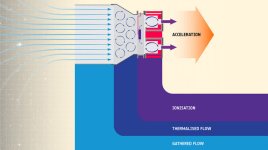Underseer
Contributor
http://www.esa.int/Our_Activities/S...rst_firing_of_air-breathing_electric_thruster
I have absolutely no idea if this thing is practical, but even if it isn't the tech is fascinating. If it works, then this will be a boon for anyone who wants to run a low-orbit satellite.

I have absolutely no idea if this thing is practical, but even if it isn't the tech is fascinating. If it works, then this will be a boon for anyone who wants to run a low-orbit satellite.

